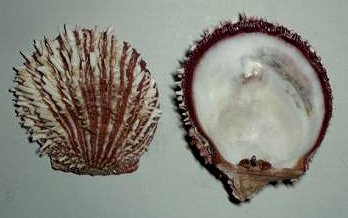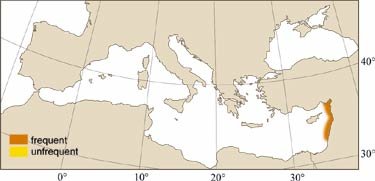
|
Relevant Synonyms
Misidentification
|
|
| photo : W. Engl |
|
SHORT
DESCRIPTION
color :
interstices dark brown with white ribs and spines. Internally blue-white with purple red margin. Hinge brown.
common size :
to 70 mm in height. |
DISTINGUISHING CHARACTERISTICS
BIOLOGY / ECOLOGY
habitat :
attached to rocky sea beds at depths 2-40 m; forms dense and strong populations along with Chama pacifica; the surfaces of their shells providing strongholds for a diverse community of algae and invertebrates. |
|
1st
Mediterranean record
|

|
|
DISTRIBUTION
|
ESTABLISHMENT SUCCESS
speculated reasons for success :
|
|
|
MODE OF
INTRODUCTION |
IMPORTANCE TO
HUMANS |
|
KEY
REFERENCES
|
|
|
 Spondylus marisrubri Roeding, 1798
Spondylus marisrubri Roeding, 1798